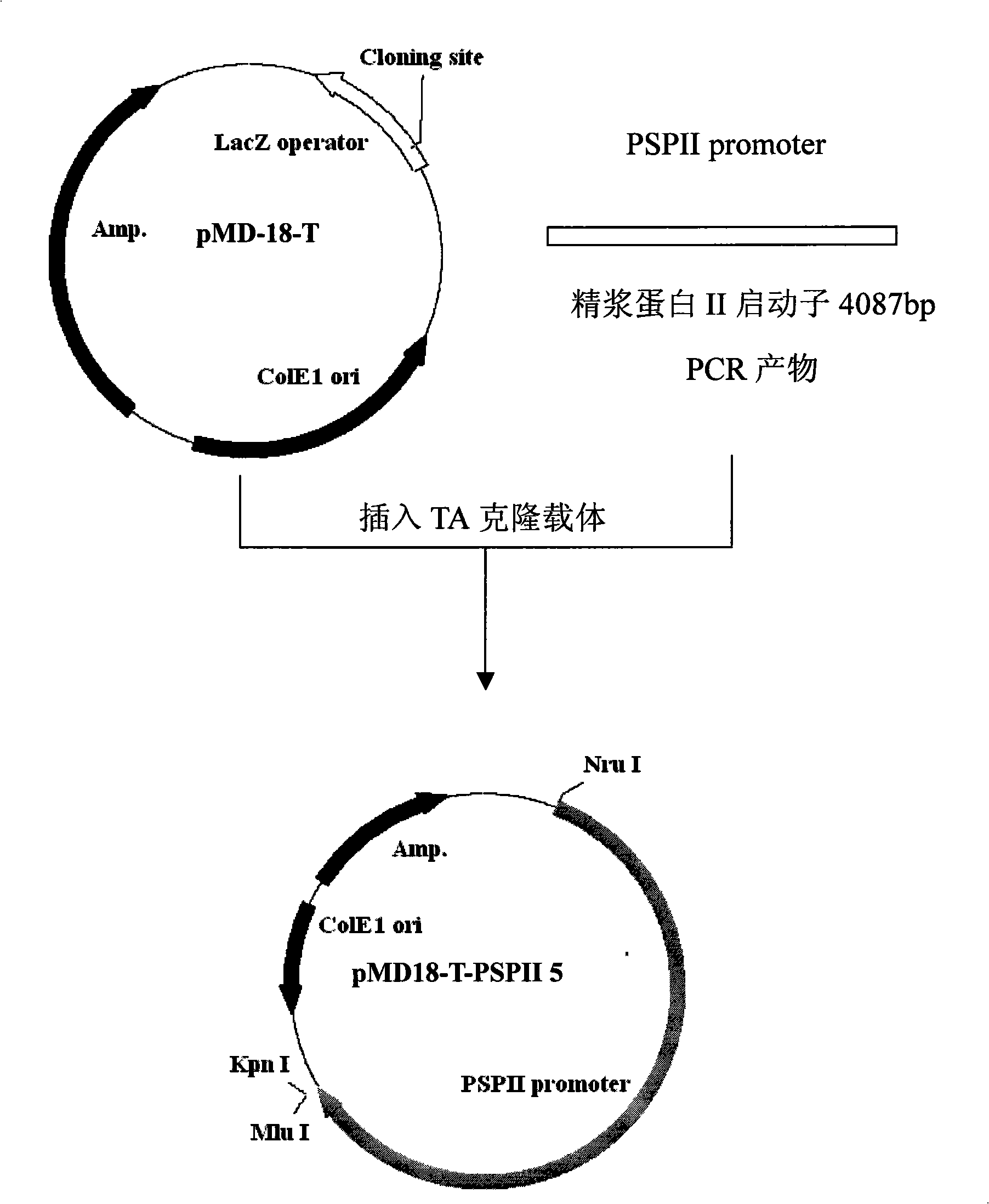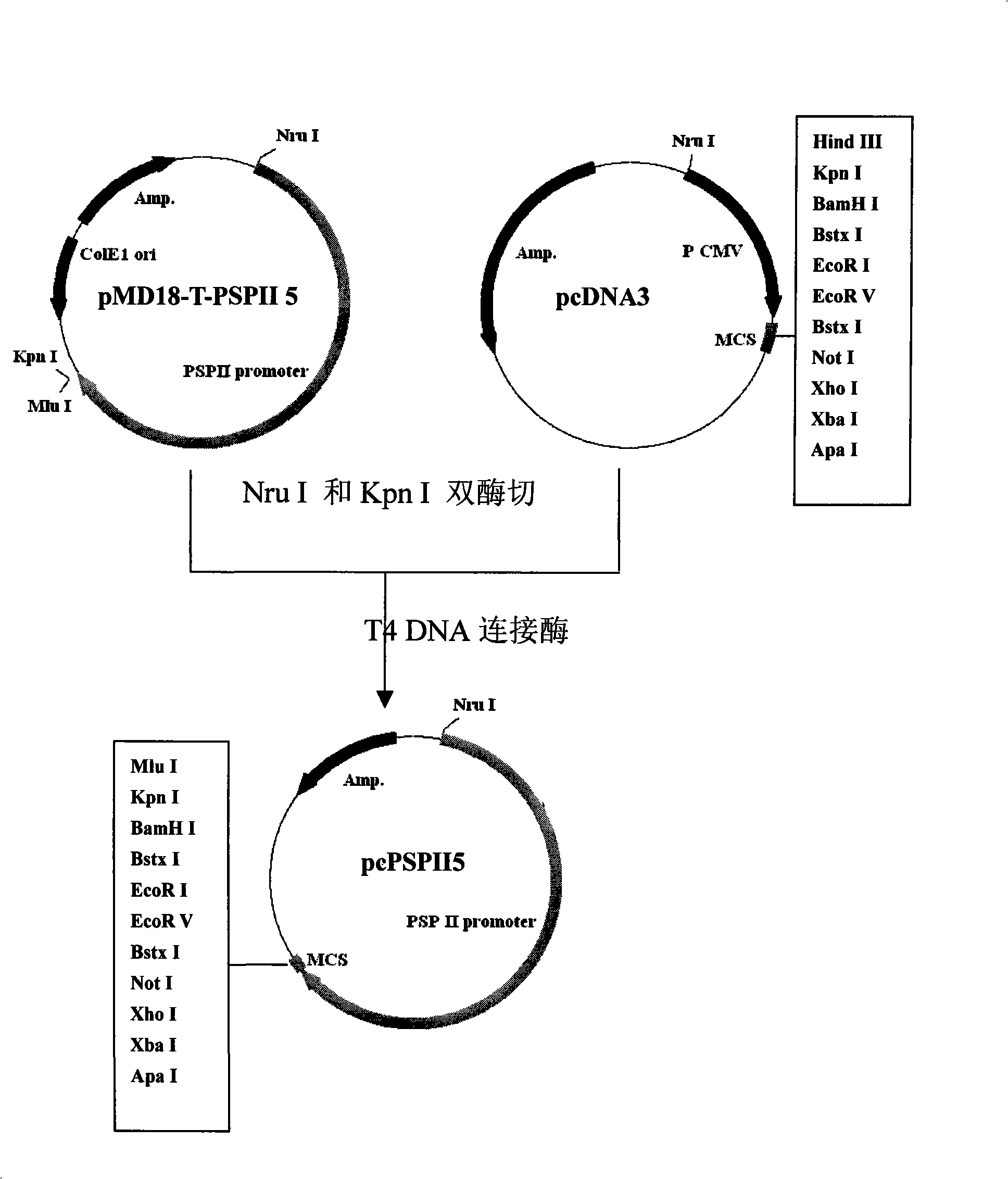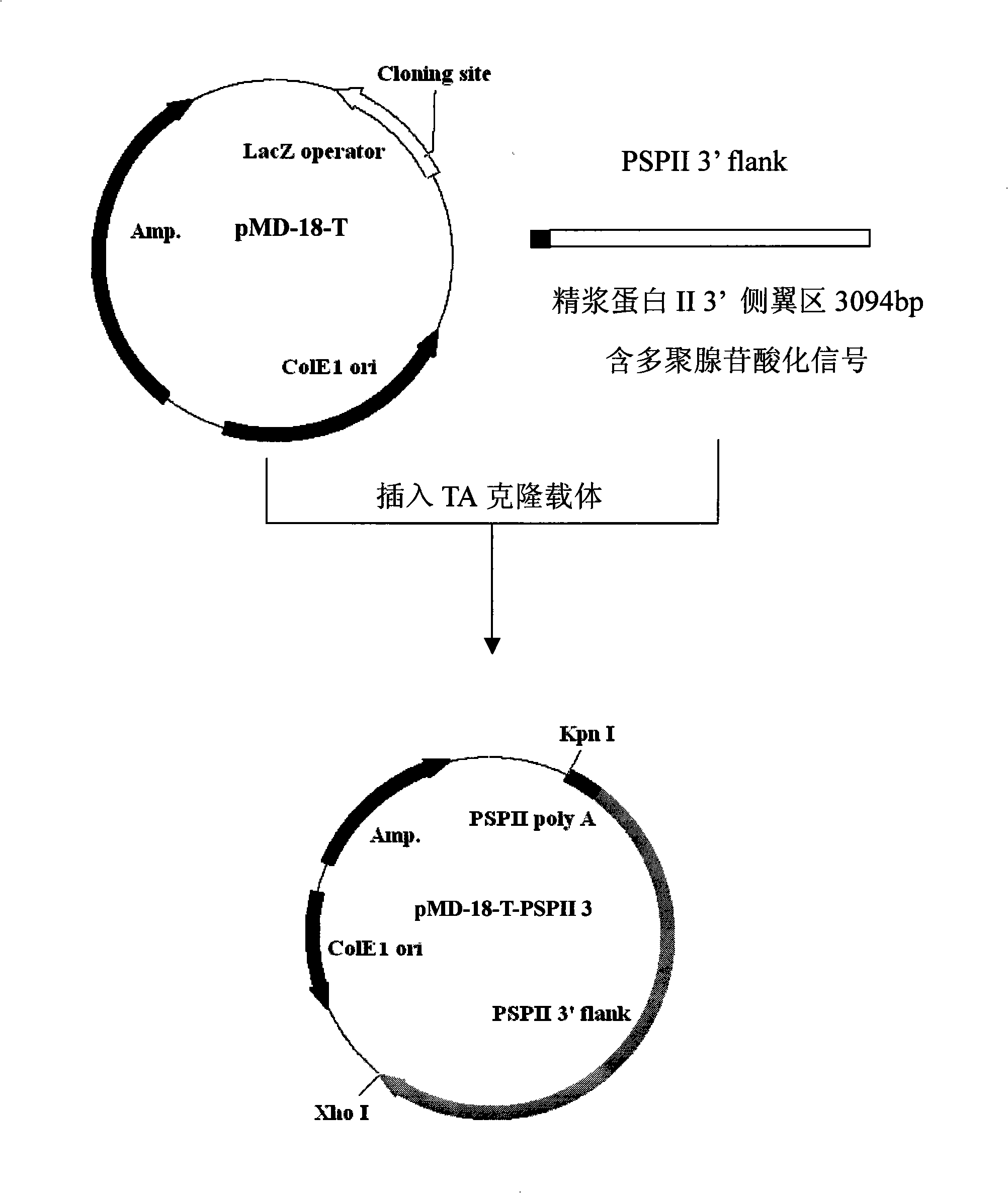Pig vesicula seminalis glandulae bioreactor and method for preparing recombinant protein or polypeptide with the same
A seminal vesicle and seminal plasma protein technology is applied in the field of transgenic pig seminal vesicle bioreactor, which can solve the problems of difficulty in collecting milk, difficult separation, low yield of exogenous protein, etc., and achieves mature collection and processing technology, advanced and simple methods, Simple effects of semen ingredients
- Summary
- Abstract
- Description
- Claims
- Application Information
AI Technical Summary
Problems solved by technology
Method used
Image
Examples
Embodiment 1
[0036] Embodiment 1 constructs gene expression vector
[0037] In order to construct a special expression vector that can be expressed in the boar seminal vesicles and secreted into the semen, this embodiment selects pcDNA3.0 as the basic framework for vector construction, and inserts various genetic elements into the transformed pcDNA3.0 vector in sequence.
[0038] 1. Transformation of pcDNA3.0: According to the analysis results of the restriction enzyme map, the pcDNA3.0 vector was digested with restriction enzyme Pvu II, the neo gene and its expression regulation sequence were excised, the digested products were separated by agarose gel electrophoresis, and DNA coagulation The 3.2kb fragment was recovered by the gel recovery kit, transformed into DH5α competent Escherichia coli after self-ligation, and a modified plasmid that did not contain the neo gene and its expression regulatory sequence was obtained from the positive transformed strain.
[0039] 2. Preparation and cl...
Embodiment 2
[0044] Example 2 Introduction of expression components into mouse genome by transgenic technology
[0045]The pcPSPII-EGFP expression vector was digested with NruI and XhoI, and after electrophoresis, the gel was cut to recover and purify the protein containing porcine seminal plasma protein II gene promoter, signal peptide sequence, coding sequence of green fluorescent protein reporter gene, and porcine seminal plasma protein II gene. The polyadenylation signal sequence and the target fragment of the 3' flanking region ( Figure 7 ). 30 micrograms of this fragment were wrapped with polycationic PEI and injected into the testes of six-week-old male mice for a total of three injections with an interval of 3 days. Counting from the last injection, 20 days later, the injected male mice were compared with normal female mice. Rats mate. After the hybrid mice were born, they were identified by PCR, and the transgenic positive mice were screened. And continue to breed transgenic p...
Embodiment 3
[0046] Example 3 Analysis of the expression of exogenous genes in transgenic male mice
[0047] The transgenic male mice of the F1 generation of the sexually mature transgenic positive male mice in Example 2 were cut open, and a piece of seminal vesicle gland tissue was excised respectively to make frozen sections. At the same time, a negative male mouse was taken to make a frozen section, and as a control, green fluorescence was observed under a fluorescent microscope, and green fluorescence was observed in the seminal vesicle gland tissue of the transgenic positive male mouse, while no green fluorescence was observed in the negative control male mouse ( Figure 9 ). Figure A is the tissue section of the seminal vesicles of the transgenic positive mice, and Figure B is the section of the seminal vesicles of the non-transgenic mice. After the transgenic positive male mice were mated with normal female mice, the vaginal suppository was collected, the vaginal suppository was di...
PUM
 Login to View More
Login to View More Abstract
Description
Claims
Application Information
 Login to View More
Login to View More - R&D
- Intellectual Property
- Life Sciences
- Materials
- Tech Scout
- Unparalleled Data Quality
- Higher Quality Content
- 60% Fewer Hallucinations
Browse by: Latest US Patents, China's latest patents, Technical Efficacy Thesaurus, Application Domain, Technology Topic, Popular Technical Reports.
© 2025 PatSnap. All rights reserved.Legal|Privacy policy|Modern Slavery Act Transparency Statement|Sitemap|About US| Contact US: help@patsnap.com



